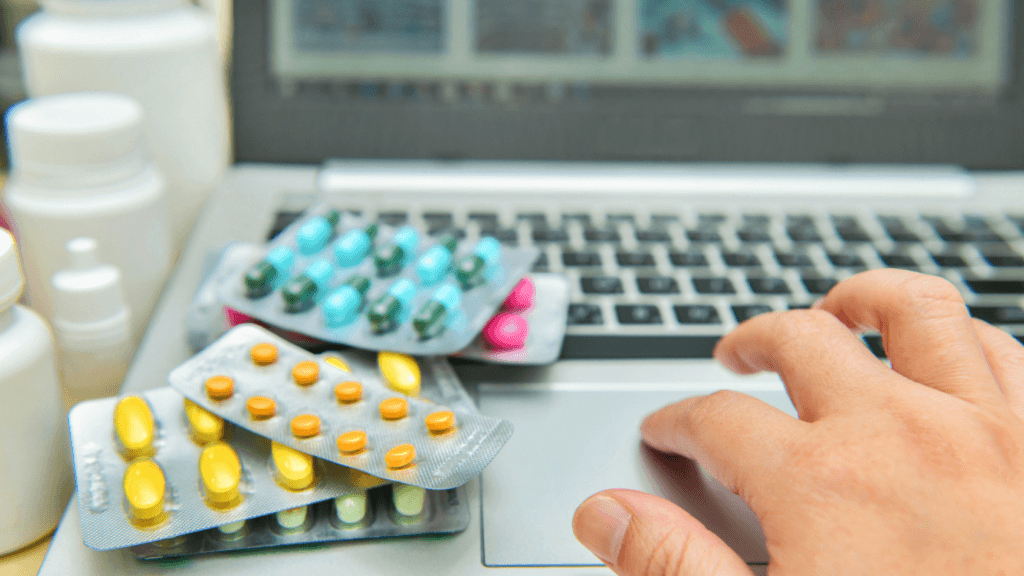Effective Strategies for Pharmaceutical Digital Advertising

The pharmaceutical industry has traditionally relied on traditional forms of advertising, such as print and television commercials, to reach its target audience. However, as the world becomes increasingly digital, pharmaceutical companies are shifting their focus toward digital advertising to keep up with the changing landscape. In this article, we will explore practical strategies for pharmaceutical digital advertising and discuss the importance of this approach in today’s pharma industry.
The Importance of Digital Advertising in the Pharma Industry
The pharmaceutical industry is growing unprecedentedly, with an expected global market value of $1.6 trillion by 2023. With such significant growth and revenue generation potential, pharmaceutical companies must prioritize effective marketing strategies to remain competitive and capture their market share.
- Demand for innovative drugs will drive oncology spending to approximately $370 billion by 2027, almost double the current level.
- Biotech medicines will represent 35% of spending globally in 2027 and will include both breakthrough cell and gene therapies, as well as a maturing biosimilar segment.
Digital advertising has emerged as a powerful tool for pharma companies to reach their target audience in a more targeted and cost-effective manner. Unlike traditional forms of advertising, such as television commercials or print ads, digital advertising allows pharma companies to reach a more specific audience by targeting their ads to specific demographics, interests, and behaviors.
By leveraging the latest multichannel marketing strategies, pharma companies can reach patients, healthcare professionals, and other key stakeholders in the industry with targeted messages, creating a more personalized and engaging experience.
Digital advertising offers the following unique opportunities for pharma companies:
- Cost-effective: Digital advertising is often more cost effective than traditional forms of advertising, allowing pharma companies to stretch their marketing budget further.
- Targeted: Digital advertising allows pharma companies to target their audience more precisely, resulting in more effective campaigns and a better ROI.
- Measurable: Digital advertising allows pharma companies to measure the effectiveness of their campaigns and make data-driven decisions to improve performance over time.
- Personalized: Digital advertising allows pharma companies to create more personalized and engaging experiences for their audience, resulting in higher levels of engagement and a better overall user experience.
However, it’s important to note that the pharma industry is heavily regulated, and companies must comply with strict guidelines and regulations set forth by organizations such as the Food and Drug Administration (FDA). This means that pharma companies must carefully navigate the digital advertising landscape to ensure their campaigns meet regulatory requirements while effectively reaching their target audience.
Advantages of Digital Advertising for Pharma Companies
Digital advertising offers several advantages for pharmaceutical companies. Firstly, it allows companies to reach their target audience more effectively. With digital advertising, companies can target specific demographics, geographic regions, and even individual healthcare professionals. This precision targeting ensures that advertising messages reach the right people at the right time.
Another advantage of digital advertising for pharma products is that it is highly measurable. Pharmaceutical companies can track the success of their digital advertising campaigns and make adjustments in real-time to ensure they are getting the best return on investment (ROI). This data-driven approach to advertising is more effective than traditional forms of advertising, which are often difficult to measure.
In the following sections, we will explore some effective strategies for pharmaceutical digital advertising and provide insights into how pharma companies can leverage digital marketing to achieve their marketing goals.

Utilizing Paid Digital Advertising for Pharma Companies
Best Practices for Paid Digital Advertising in Pharma
One of the most effective ways pharmaceutical companies reach their target audience is through paid digital advertising. Paid digital advertising is any form where the advertiser pays a fee to display their ads.
When it comes to paid digital advertising in the pharma industry, several best practices exist. Firstly, ensuring that all advertising complies with relevant regulations, such as those set out by the FDA in the United States, is essential.
Understanding Your Media Mix
When it comes to digital advertising, choosing the right digital media channels is crucial for reaching and engaging with the target audience. Healthcare professionals may be more likely to engage with advertising on medical news websites or journals, while patients may be more likely to engage with advertising on social media platforms. With the plethora of digital media channels available, it can be difficult to determine the most effective media mix for achieving the desired marketing goals. This is where a media mix model comes into play. By using a statistical model to analyze various factors such as audience reach, cost, and effectiveness of different media channels, companies can determine the optimal allocation of advertising spending across different channels to maximize ROI.
In the context of digital advertising, a media mix model can help companies determine how much to invest in different digital media channels, such as search engine marketing (SEM), display advertising, social media advertising, and programmatic advertising. By analyzing historical data on the performance of each channel, a media mix model can predict how different combinations of media spending will impact the overall ROI.
To use a media mix model for digital advertising, companies should follow these steps:
- Define the marketing goals: Identify the key performance indicators (KPIs) that will be used to measure the success of the advertising campaign, such as website visits, lead generation, or sales.
- Determine the media channels: Identify the different digital media channels that will be used in the advertising campaign, such as SEM, display advertising, social media advertising, and programmatic advertising.
- Collect historical data: Collect historical data on the performance of each media channel, including metrics such as impressions, clicks, conversions, and cost.
- Develop the media mix model: Use statistical modeling techniques to develop a media mix model that predicts the impact of different media spending scenarios on the overall ROI.
- Optimize the media mix: Use the media mix model to determine the optimal allocation of advertising spending across different media channels to achieve the desired marketing goals.
By using a media mix model for digital advertising, companies can make data-driven decisions about how to allocate their advertising budget across different digital media channels to maximize the ROI. This approach helps companies to be more efficient with their advertising spending and achieve better results from their digital advertising campaigns.
Demand efficiency is a critical metric in pharma marketing, as it measures how effectively your ads drive demand for your products or services. Demand efficiency is calculated by dividing the number of conversions by the total number of ad impressions, which can provide valuable insights into the effectiveness of your ad campaigns and help determine whether their advertising efforts are generating a positive return on investment (ROI).
By tracking demand efficiency, you can identify which ads and campaigns drive the most demand for your products or services, allowing you to optimize your campaigns for maximum impact. You can also use demand efficiency to identify areas for improvement, such as ad copy, targeting, or landing pages, and make data-driven decisions to improve your campaigns’ effectiveness.
Cost per acquisition (CAC) is another essential pharma marketing metric measuring the cost of acquiring a new customer. This metric is calculated by dividing your marketing efforts’ total cost by the number of new customers acquired. CAC is a critical metric for ensuring that your advertising efforts generate a positive ROI, as it provides insight into how much it costs to acquire a new customer.
By tracking CAC, you can identify which advertising channels and campaigns are most effective in generating new customers and optimize your campaigns accordingly. You can also use CAC to set realistic marketing budgets and goals, ensuring that your marketing efforts are cost-effective and generating a positive return on investment.
To improve demand efficiency and CAC in your pharma marketing campaigns, consider implementing the following strategies:
- Target your ads to specific audiences: By targeting them to specific audiences, you can improve their relevance and effectiveness, driving more demand and reducing your CAC.
- Optimize your landing pages: Landing pages are crucial for converting ad clicks into customers, so optimizing them for maximum effectiveness is essential. Consider A/B testing different landing page designs and messaging to identify the most effective approach.
- Monitor your campaigns closely: Regularly monitor your campaigns’ performance and adjust your strategies as needed to improve demand efficiency and reduce your CAC. Use data and insights to make informed decisions and optimize your campaigns for maximum impact.
- By focusing on demand efficiency and CAC, you can improve the effectiveness and ROI of your pharma marketing campaigns, driving more demand and generating more revenue for your business.
Optimize your website for search engines: Ensure your pharmaceutical product website content is optimized for search engines by using relevant keywords, creating quality content, and ensuring that the website is user-friendly.
Landing Page Performance: Tracking the performance of your landing pages is crucial for optimizing your ad campaigns and improving the user experience.
Leverage social media to build relationships: Utilize social media platforms to create engaging content, respond to comments and messages, and participate in relevant conversations.
Utilize data analytics to track metrics and analyze data: Continuously review and refine your digital marketing strategy by tracking metrics, analyzing data, and making adjustments as necessary.
Comply with industry regulations: Ensure your digital marketing campaigns comply with industry regulations and guidelines set forth by organizations such as the FDA.
Personalize your messaging: Utilize data-driven insights to personalize your messaging and create more targeted and effective campaigns.
Test and optimize your campaigns: Use A/B testing to test different ad creatives and messaging to maximize your campaign’s effectiveness and reach.
Utilize programmatic advertising: Consider utilizing programmatic advertising to reach your target audience more efficiently and effectively.
Best Practices for Maximizing the Effectiveness of Pharma Digital Advertising
In today’s ever-evolving digital landscape, it is crucial for pharmaceutical companies to stay ahead of the curve and continually refine their digital advertising strategies. By following the best practices outlined in this article, pharmaceutical companies can effectively reach their target audience and drive business results. However, it is important to remember that the digital advertising industry is constantly changing, and companies must stay nimble and adapt to new trends and technologies. By doing so, they can stay ahead of the competition and continue to achieve success in their digital advertising efforts.
For more information about the most efficient and effective paid digital advertising strategies, get expert help from emagineHealth. Let’s get started.

Paid Digital Media for Healthcare & Biopharma
In our newest ebook, Paid Digital Media for Healthcare & Biopharma, we discuss how to get in front of your ideal audience, the importance of targeting the patient and HCP journey, how to determine which platforms to focus on, and more.